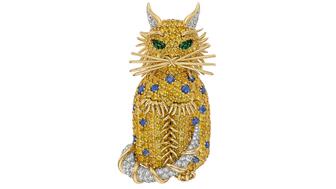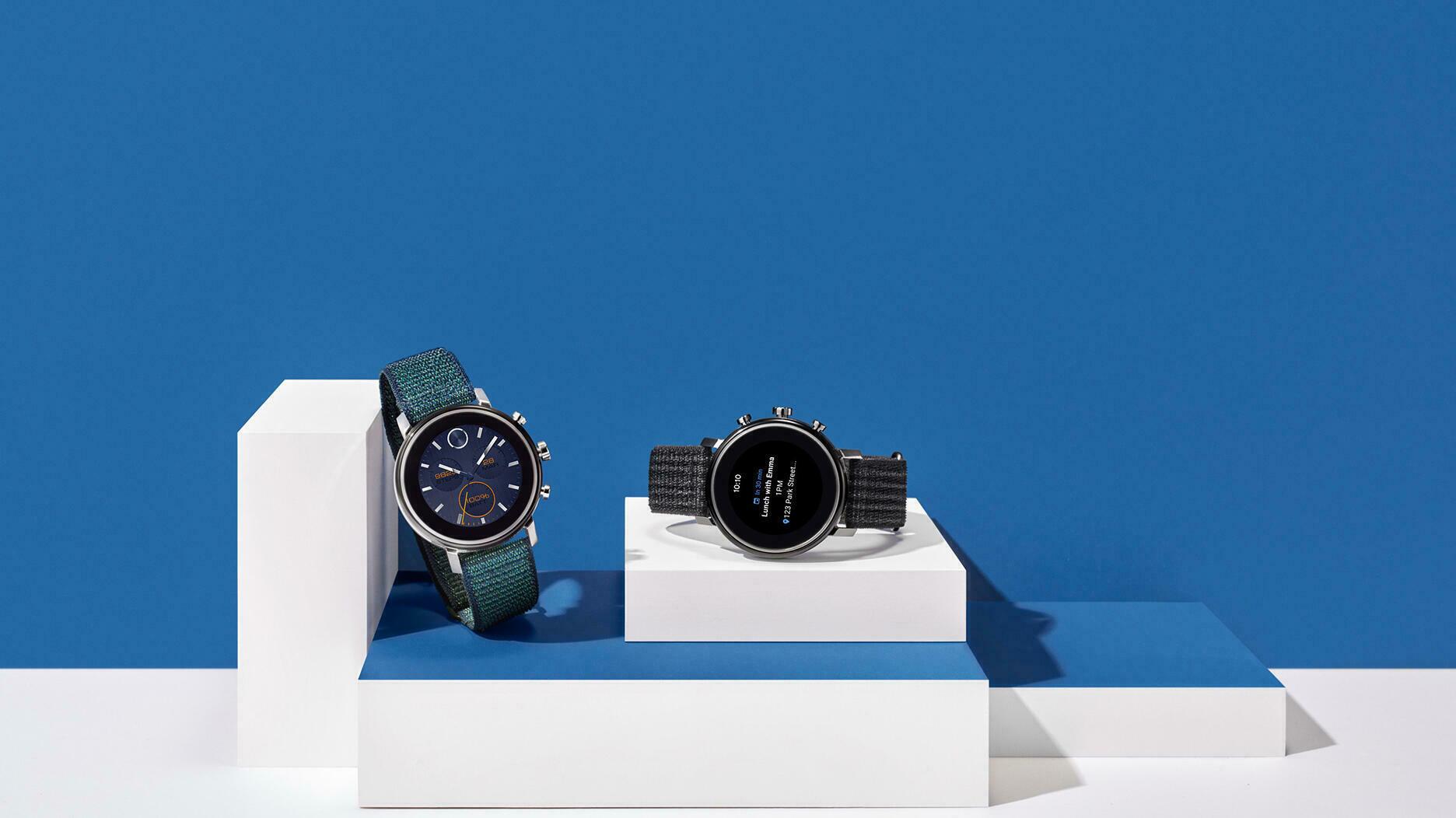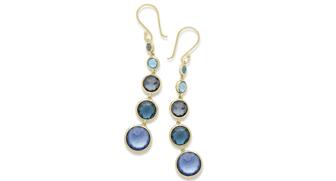The luxury goods company said founder Ippolita Rostagno will remain at the brand’s helm.
Signet’s Q2 Sales Slide 35% As It Leans on E-Commerce
The retailer has created a full-time virtual selling team to serve customers “wherever they want to shop” for the upcoming holiday season.

Akron, Ohio—Signet Jewelers Ltd.’s sales saw improvement in the second quarter as stores began to reopen, but the jewelry giant still leaned heavily on its growing online sales.
In the second quarter ending Aug. 1, sales totaled $888 million, down 35 percent year-over-year, with same-store sales dropping 31 percent, the retailer reported Thursday morning.
Year-to-date, Signet’s sales have totaled $1.74 billion, down 38 percent year-over-year, with same-store sales sliding 35 percent.
When COVID-19 hit, the retailer made the decision to close all its stores in North America, furloughing the majority of store and support center employees and cutting executive salaries, in late March.
Stores began to reopen in May, with around 20 percent of Signet’s stores operational then. Seventy-five percent were open by the end of June, and 90 percent by mid-July.
Brick-and-mortar sales improved alongside store reopenings, said Signet, but ultimately declined 46 percent in the second quarter.
Online sales were up 72 percent year-over-year to $270.1 million.
On the company’s earnings call Thursday morning, CEO Gina Drosos noted that 40 percent of purchases in the second quarter came from new customers, many of whom were acquired online.
Signet’s e-commerce momentum continued in the third quarter with preliminary data showing August e-commerce sales up 65 percent, while same-store sales have climbed 11 percent.
The company is leaning heavily on its digital capabilities, implementing a full-time virtual selling team and training 15,000 store associates to work virtually with customers from their homes or in stores.
RELATED CONTENT: Here’s How Signet Is Reopening Its Stores
“Signet’s store footprint, combined with recognized jewelry expertise and new virtual selling capabilities, is a strategic, competitive advantage in the jewelry category where trust and counseled selling is important, especially in bridal,” said Drosos.
Signet said it served more than 300,000 customers via virtual consultations and curbside pickup in the second quarter and increased its e-commerce distribution throughput five-fold.
“While the macro environment remains uncertain, the company believes that it is prepared, through both its virtual and physical footprints, to serve customers wherever they want to shop and however this upcoming holiday season unfolds,” Signet said in the press release on its results.
In North America, where Signet’s banners include Kay, Jared and Zales, second-quarter same-store sales sank 31 percent to $823 million.
While brick-and-mortar same-store sales in the region fell 45 percent, online sales were strong, climbing 73 percent.
The average transaction value (ATV) was up 2 percent, but the number of transactions fell 28 percent.
A
In the U.K., same-store sales were down 39 percent.
Brick-and-mortar sales sank 55 percent while e-commerce sales were up 66 percent. ATV increased 11 percent while the number of transactions dropped 43 percent.
Product-wise, Drosos noted that more customers were buying meaningful, sentimental, and religious jewelry amid the COVID-19 pandemic.
Sales in the bridal category sank 27 percent to $445.9 million year-over-year in the second quarter and fell 37 percent to $788.1 million in the half-year.
Customizations services, like those offered by Neil Lane and Vera Wang, were a driver in bridal sales, said Drosos.
Signet’s research found that more than 50 percent of non-engaged couples are quarantining together and half of them said their relationship had gotten stronger. Only seven percent said it had gotten worse.
She said the results signal “a nice tailwind in the bridal business.”
Sales in of fashion jewelry dropped 33 percent to $307.2 million year-over-year in the second quarter and fell 35 percent to $617.7 million in the half-year.
In the watches category, quarterly sales were down 50 percent to $46.1 million year-over-year and down 50 percent to $88.2 million in the half-year.
By banner, Kay Jewelers posted quarterly sales of $325 million, down 39 percent year-over-year while Jared’s quarterly sales dipped 34 percent to $168.5 million.
Zales’s quarterly sales were down 34 percent to $185.1 million while Piercing Pagoda’s sales fell 20 percent to $59.3 million.
E-tailer James Allen was the sole gainer, posting quarterly sales of $64.3 million, up 20 percent year-over-year.
The retailer began testing out James Allen store-in-stores in Jared locations to give the banner a “curated, physical presence.” The concept will be gradually expanded to 80 locations, or one-third of Jared’s fleet.
Looking at its store count, Signet closed 293 of the 380 stores it plans to shutter this fiscal year, mostly in traditional mall locations.
As for the holiday season ahead, Signet will be launching new products this month in preparation.
“Fifty-one percent of customers are planning to shop earlier this holiday season than they have in the past, so we’ll be ready for that,” said Drosos.
In light of the coronavirus pandemic, Signet declined to provide financial guidance for the remainder of fiscal 2021.
The Latest

Laura Burdese, who joined the Italian luxury brand in 2022, will take on the role in July.

The National Jeweler editors revisit the most noteworthy industry happenings and design trends from 2025.

How Jewelers of America’s 20 Under 40 are leading to ensure a brighter future for the jewelry industry.

Need a gift for the cat lover who has everything? Look no further than our latest Piece of the Week.


It purchased the “Grosse Pièce,” an ultra-complicated Audemars Piguet pocket watch from the ‘20s, for a record-breaking price at Sotheby’s.

The lab-grown diamond grower now offers custom engagement and fashion jewelry through its Kira Custom Lab Jewelry service.

Roseco’s 704-page catalog showcases new lab-grown diamonds, findings, tools & more—available in print or interactive digital editions.

Chandler got his start at Michelson Jewelers and has served as DCA president and CEO since 2001. He will retire at the end of the month.

The boutique is slated to open this week inside Terminal 8, offering pre-owned Rolex watches and more to international travelers.

Sponsored by Digital Monitoring Products

The special-edition egg pendant ingested in a New Zealand jewelry store was recovered after a six-day wait.

Associate Editor Natalie Francisco plays favorites with Piece of the Week, selecting a standout piece of jewelry from each month of 2025.

The “Love and Desire” campaign is inspired by the magic that follows when one’s heart leads the way, said the brand.

Two awardees will receive free tuition for an educational course at the Swiss lab, with flights and lodging included.

Berta de Pablos-Barbier will replace Alexander Lacik at the start of January, two months earlier than expected.

Sotheby’s held its first two jewelry sales at the Breuer building last week, and they totaled nearly $44 million.

Winners will receive free registration and lodging for its fourth annual event in Detroit.

Here are six ideas for making more engaging content for Instagram Reels and TikTok, courtesy of Duvall O’Steen and Jen Cullen Williams.

The honorees include a notable jewelry brand, an industry veteran, and an independent retailer.

Carlos Jose Hernandez and Joshua Zuazo were sentenced to life without the possibility of parole in the 2024 murder of Hussein “Sam” Murray.

Yood will serve alongside Eduard Stefanescu, the sustainability manager for C.Hafner, a precious metals refiner in Germany.

The New Orleans jeweler is also hosting pop-up jewelry boutiques in New York City and Dallas.

Set in a Tiffany & Co. necklace, it sold for $4.2 million, the highest price and price per carat paid for a Paraíba tourmaline at auction.

The jeweler’s “Deep Freeze” display showcases its iconic jewelry designs frozen in a vintage icebox.

Take luxury gifting to new heights this holiday season with the jeweler’s showstopping 12-carat sphene ring.

This year's theme is “Unveiling the Depths of the Ocean.”




























